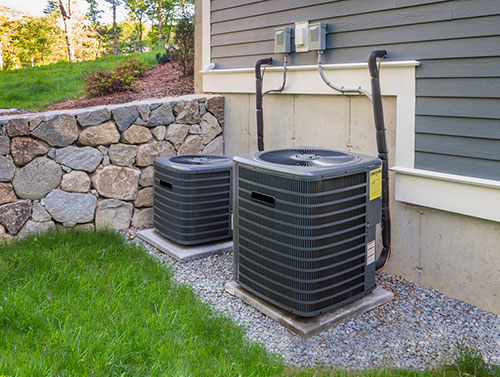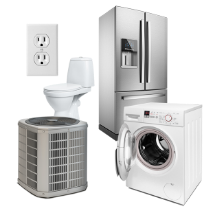If you know little about how your home’s air conditioner functions, this article will help you understand so you can keep it running the way it’s supposed to.
The Refrigeration Cycle
If you’ve ever placed your hand over a vent while your air conditioner is running, you have felt the joy of cool air. But, where exactly is this cool air coming from? To understand how an AC unit cools your home, you first need to understand the refrigeration cycle:
- Powered by electricity, refrigerant flows within a closed system of lines between the outside unit and indoor unit.
- A motorized fan pulls warm air from inside the home into ductwork.
- As refrigerant is pumped from the interior evaporator coil from the exterior compressor coil, it absorbs heat from the air.
- Once the air is cooled, it is then forced into connecting ducts and through the vents in your home, where it lowers the interior temperature.
- The refrigeration cycle then begins again, providing a constant method for keeping your home cool.
System Components
If you want to gain an even better understanding of how your AC system operates, it helps to know a little about its components. Most central air conditioning systems consist of a split or two-part system, which includes:
- An evaporator coil in the interior of a home
- An outdoor unit, containing the compressor, condenser coil, fan and electrical components
- A series of refrigeration lines or pipes, connecting the exterior and interior equipment
- Refrigerant chemicals which circulate through the exterior and interior unit
- Ducts, which act like air tunnels that funnel cool air to spaces within a home
- A thermostat that allows users to operate the system and set desired temperatures
These days, some homes have geothermal central heating and/or cooling systems, which transfer heat to or from the ground. These systems draw heat from interior air and transfer it to the ground outside, where the temperature remains at about 50 degrees Fahrenheit, regardless of the season. The ground then cools the refrigerant, which then returns cool air indoors. This method provides energy-efficient comfort, since it only uses electricity to distribute air throughout the home.
Protecting Your System
In addition to cooling your home, your HVAC system plays a key role in maintaining indoor air quality. Ventilation helps purify and circulate air, remove bad smells, control moisture levels and prevent air stagnation. Forced air systems help keep allergens, volatile organic compounds (VOCs) and airborne particulates out of your home. That said, they do require regular maintenance to keep them functioning properly. This means changing the filters every one to six months. It’s also a good idea to have your system inspected, serviced and cleaned once a year.
You should also keep an eye out for potential problems, including odd odors, inconsistent temperatures, leaks, high energy bills and strange noises. You can help protect yourself from high repair and replacement costs by getting a home service warranty. To benefit, however, it is important to properly maintain your system and schedule regular inspections.
2-10 HBW offers the most comprehensive Home Warranty coverage for homeowners. Let us help you protect your home.








